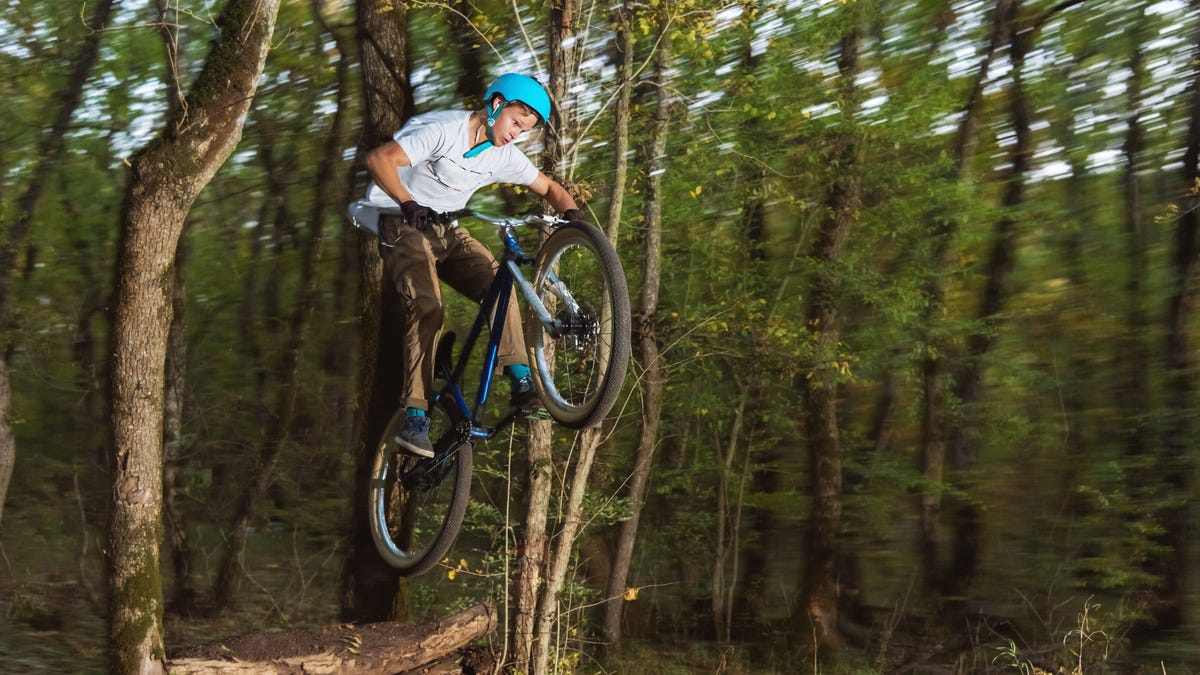Should You Let Your Kids Do Extreme Sports? - 5 minutes read

When your child is born, you imagine all the possibilities that await them over what you hope will be a long, healthy future. You might mentally fast-forward past their childhood from time to time, daydreaming that they’ll grow up to be a doctor, an engineer, a business owner, an accomplished chef. They might write moving words or build important structures or create beautiful art. Most of us, though, don’t imagine our child’s passion will turn out to be, say, ski jumping.
But that is the situation writer and editor Bari Nan Rothchild found herself in when her son turned eight years old, completed his first official jump, and declared: “I don’t care if I am good at it or bad at it, I just want to keep doing it.” Now, she writes for the New York Times, he is 13 years old and is flinging himself from the side of a mountain at ever greater heights:
His coach flags him, and in a nanosecond, he is crouched and gliding down the run—on porcelain tracks, in the off-season. Whooooosh!—that’s the sound I am waiting for, like a jet taking off, only it’s my son who is in flight, his ankles cocked, skis forming a V-shape, his arms behind him, and then, in less time than it has taken me to write these words, his skis make a satisfying “clap” against the plastic-covered landing hill, one ski slightly behind the other in “telemark” position as he glides along the grassy outrun, crouching and hugging his knees to slow his momentum, a human brake. He is grinning, braces gleaming in the sunlight.
You may not be wild about the idea of your child partaking in any activity in which the purpose is to move quickly up or down the side of a mountain or take flight into the air. But before you say no, here are a few steps to take.
First, get curious
Some kids are born reserved and cautious, happy to keep their feet firmly planted on the Earth. And others are climbing up and flinging themselves off of furniture before they’re even walking. As they grow older, the more daring kids are likely to want to seek greater thrills from their physical activity. Ask them what draws them to their new sport of interest. Do they know someone who does it? Did they watch videos of others doing it on YouTube?
Kids need to feel heard. So even if you’re ultimately going to decide they’re not yet old enough to try whatever extreme sport or activity they’re interested in, it’s important for them to know that you are trying to understand why it is piquing their interest. And if you understand what they want to get out of it—whether it’s time with friends or a new physical challenge—you may be able to compromise on less risky alternatives or find other ways to ease into a new sport that you’re more comfortable with and is satisfying for them.
Then, do your own research
Before you refuse to let your child try out snowboarding, mountain biking, BMX racing, rock climbing, or skateboarding, research their specific sport of interest. Particularly if you are a risk-averse person yourself, a sport may seem more dangerous because 1) It’s not something you’d ever attempt and 2) You don’t have enough information. So it’s time to set out on a fact-finding mission.
We know football is among the most dangerous sports for kids to play because of its concussion risk. But other favorites we tend to encourage (including basketball, soccer, and baseball) regularly end up at the top of the list, too, for causing hundreds of thousands of injuries each year in kids—from strains and sprains, fractures, and torn ligaments, to knee injuries and concussions.
Of course, that’s at least partially because of the sheer number of kids playing those sports, as Family Education reports:
Until there’s more research, it’s hard to say whether the most injury-prone [team] sports for kids ... are really more dangerous than alternative sports. Team sports may cause more injuries—not because of the nature of these sports but because greater numbers of kids participate in them. More kids play a popular sport like basketball, for example than skateboarding.
But no sport is free from risk, and many injuries can be prevented or the risk of severity reduced by taking proper precautions. The STOP Sports Injuries program, which was started by the American Orthopaedic Society for Sports Medicine, offers tip sheets for a variety of sports, including inline skating, rugby, snowboarding, and surfing.
Finally, talk to a professional in the field
To really understand the appeal of certain sports, as well as the risks and precautions necessary, you’re best off going to someone who has spent their life doing it. Find athletes, coaches, or trainers in the field who can help you understand the sport from their perspective. They can talk about how they got started in the sport and their experiences in it as they grew older. They may have valuable advice or insight into how you might proceed with allowing your child to begin.
If they’re in your area, they may also be able to point you toward some beginner’s lessons or trainings they can do nearby to learn the proper techniques to lower the risk of injuries.
Source: Lifehacker.com
Powered by NewsAPI.org